
For some, frying can be intimidating— the worry that we will burn and blacken food into nothingness, or the hot oil that may leave a very painful splatter. We have not even mentioned the anxiety about cholesterol-laden food. So why are we crazed about using an air-fryer to fry our food? Imagine your family sitting down at your dinner table and being greeted with a platter of hot ikan cencaru sumbat. Your family will thank you and ask how you braved a wok full of hot oil.
But you didn’t. You decided on the healthier (and safer) alternative – to use an air fryer. Here in this experiment, we will determine if it is possible to make ikan cencaru sumbat using an air fryer. How complicated can it be?
It’s simple, as it turns out. But the results aren’t precisely similar to legendary warungs that sold stuffed fried ikan cencaru with crispy skin. The most significant difference between air fried ikan cencaru and the ones sold by the warungs is that the fish’s meat is juicier and more flavorful than the warungs’ crispy version. There’s just one catch, you must peel its skin off to access the luscious meat inside. We found the skin of the air fried ikan cencaru inedible, but then again, we reckon it was the skin that sealed in the flavor of the sea as the fish gets cooked in the air fryer. On another note, to fully enjoy air fried ikan cencaru, we recommend removing the myriad of pointed bones before cooking the fish. This so that you can enjoy that flavorful meat without interruptions.
In this experiment, we used the Philips XXL Airfryer. What this device actually does is concentrate convected heat into a small cooking cavity utilizing a fan. Yes, just like a conventional oven with a built-in fan, but much smarter. Unlike most ovens, you just have to select a pre-programmed button, and it comes out perfect!
Ingredients
A. The fish
300g Ikan Cencaru (Ask your fishmonger to only remove the stomach and gills)
5g turmeric powder
4 tsp cooking oil
B. The herb and spices paste
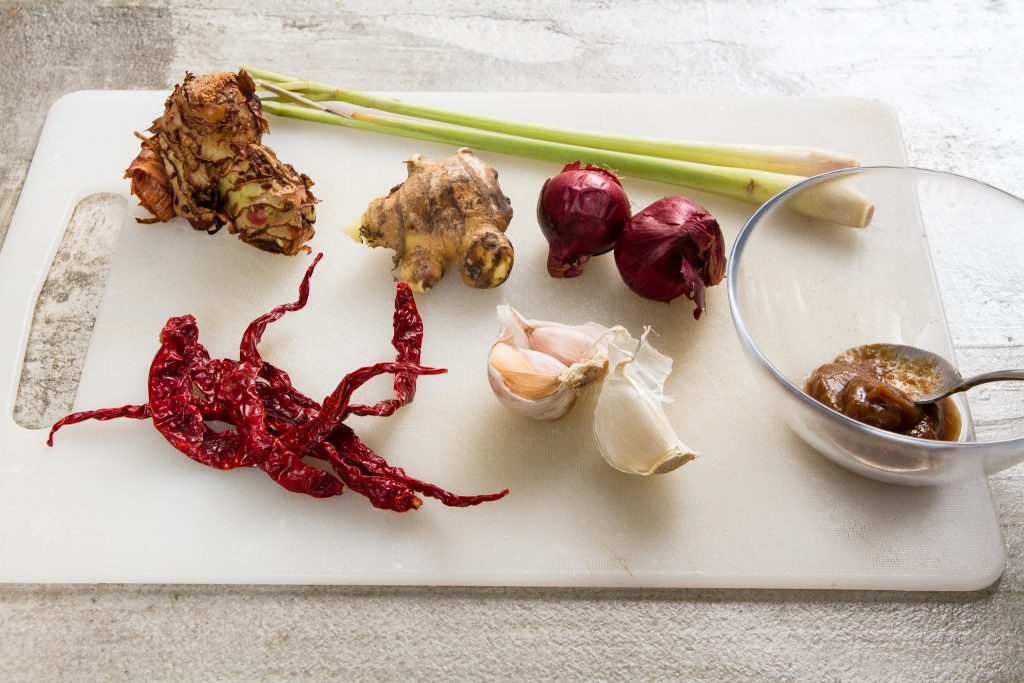
Shallots 30g
Galangal 40g
Ginger 30g
Lemongrass 25g (1 or 2 stalks, depending on the size)
Dried chilli 5g
1 tsp assam puree
6g sugar
5g salt
120ml water
30g cooking oil (about 3 tbsp)
Method
The herbs and spices paste.
Instead of a food processor, we will be using a blender to puree the ingredients.
1. At least an hour before working on the rest of the ingredients, wash and soak the dried chilli in water.
2. Peel the shallots and put into the blender.
3. Remove the outer skin of the galangal and ginger and put them into the blender.
4. Remove the outer layer of the lemongrass, chop into smaller pieces, and put it into the blender.
5. When the chilli looks a bit more rehydrated, put them into the blender.
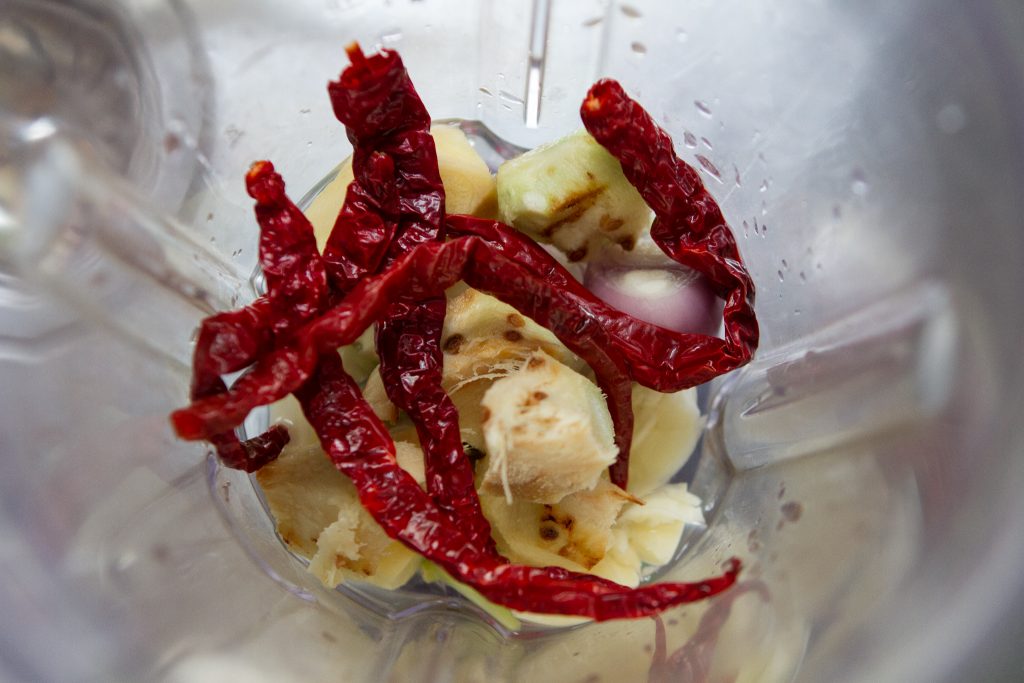
6. Add in 120ml of water. Blend everything within into a slightly gritty puree.

7. Put in 30g of cooking oil into a small saucepan, and heat up over low heat. Put the pureed herbs and spices in and stir.
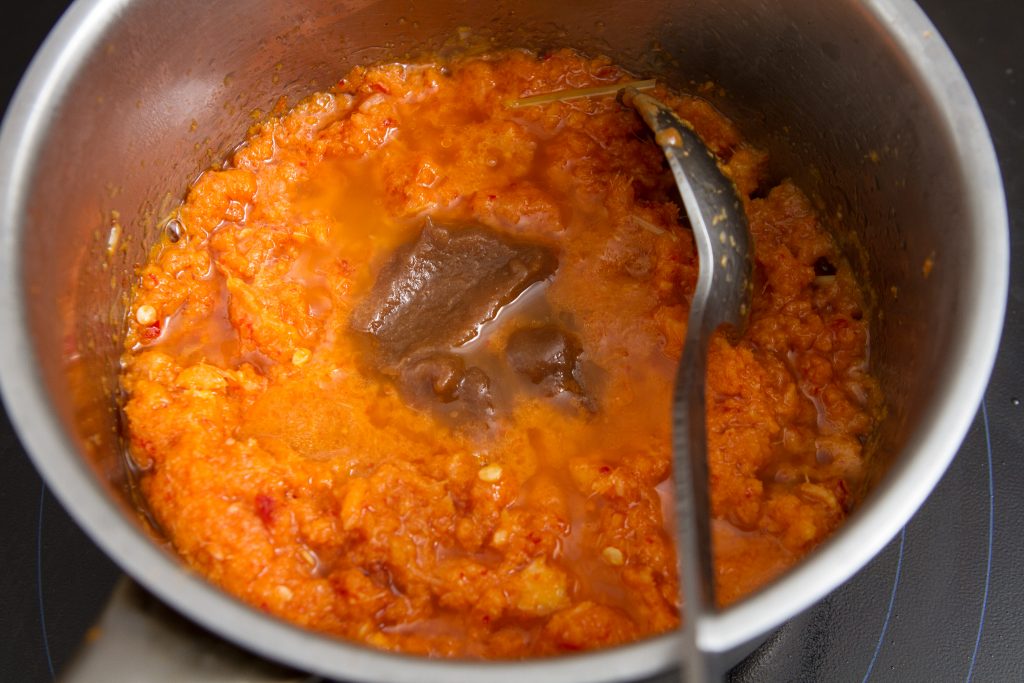
8. Stir in the assam puree, followed by the salt and sugar. Keep stirring.
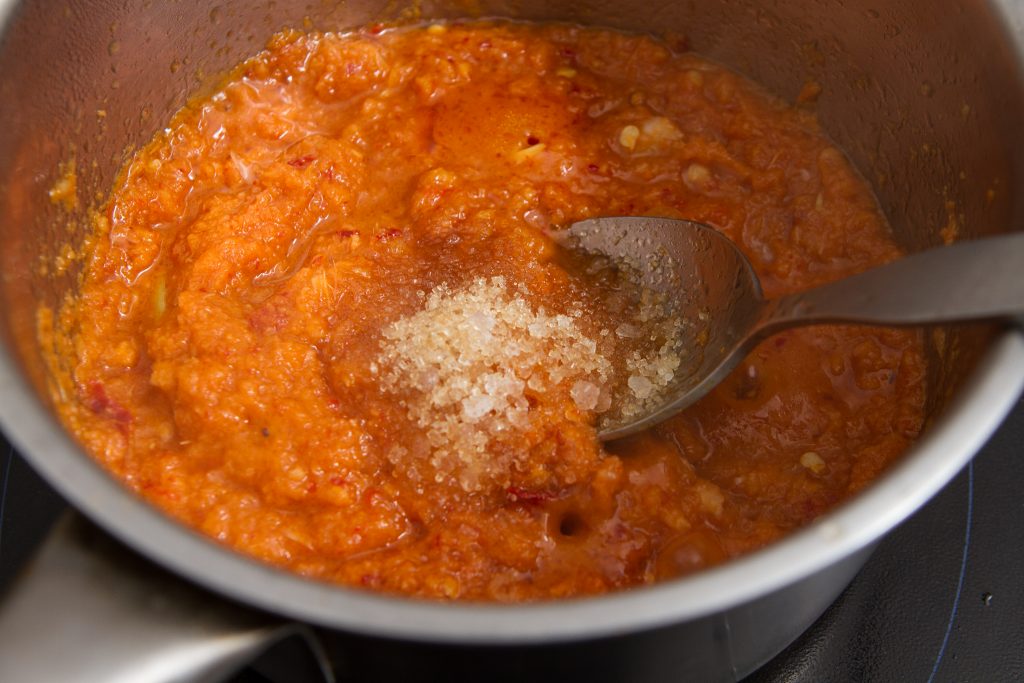
9. Do not cook until the paste becomes too dry. We want it to have some water within.
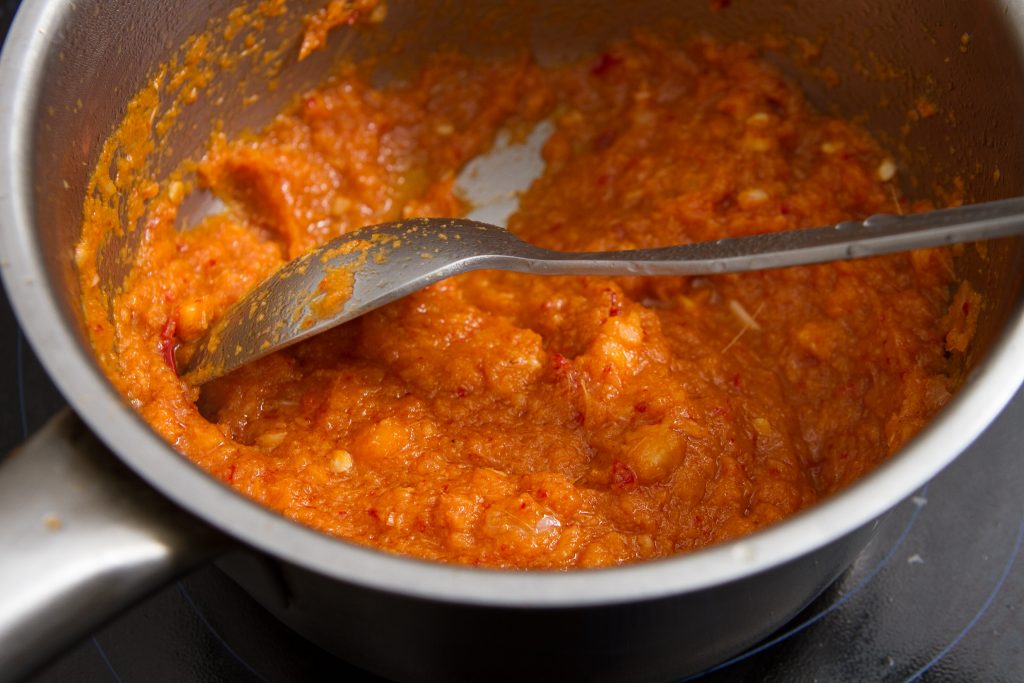
10. Set aside and let it cool down. We shall now turn our attention over to the fish.
The fish
1. With a small, sharp knife, cut open the belly part even more. Slide the knife between the spine and flesh on both sides. Then remove the central spine between the head and the tail. Pare off the flesh that’s sticking to the spine and set aside- we will stuff it back into the fish later.
2. Remove about 8 or 9 long bones at the rib cage area. After this, search for the shorter bones pointing outwards to the skin (along the blue line in the photo) and remove them. It’s easier to do this on a bigger fish. We used fingers to feel for the bones and pull them off.
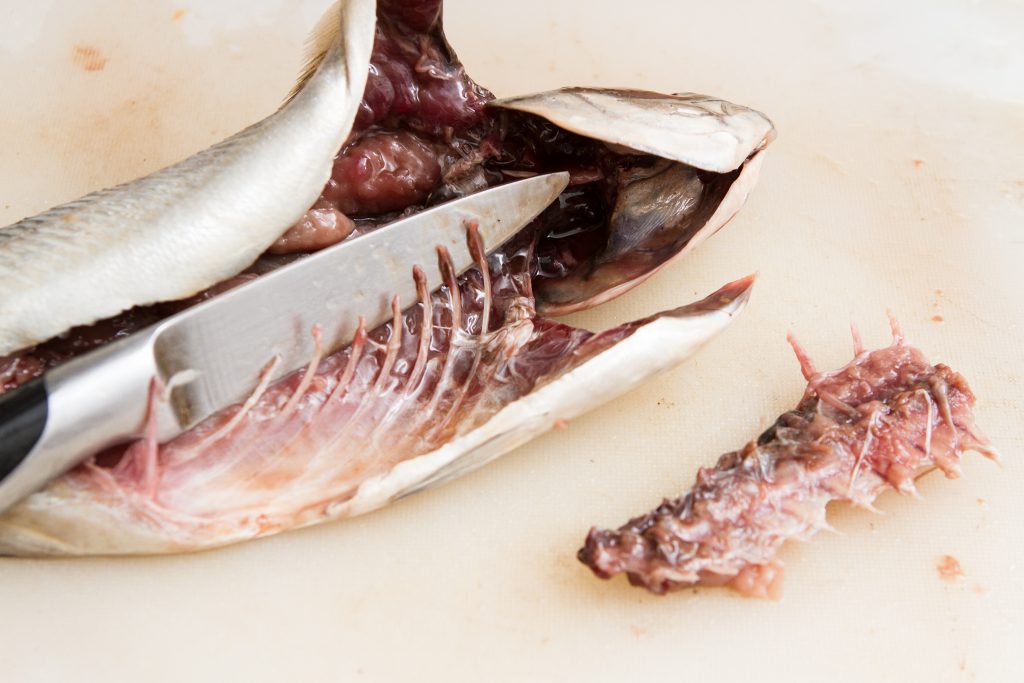
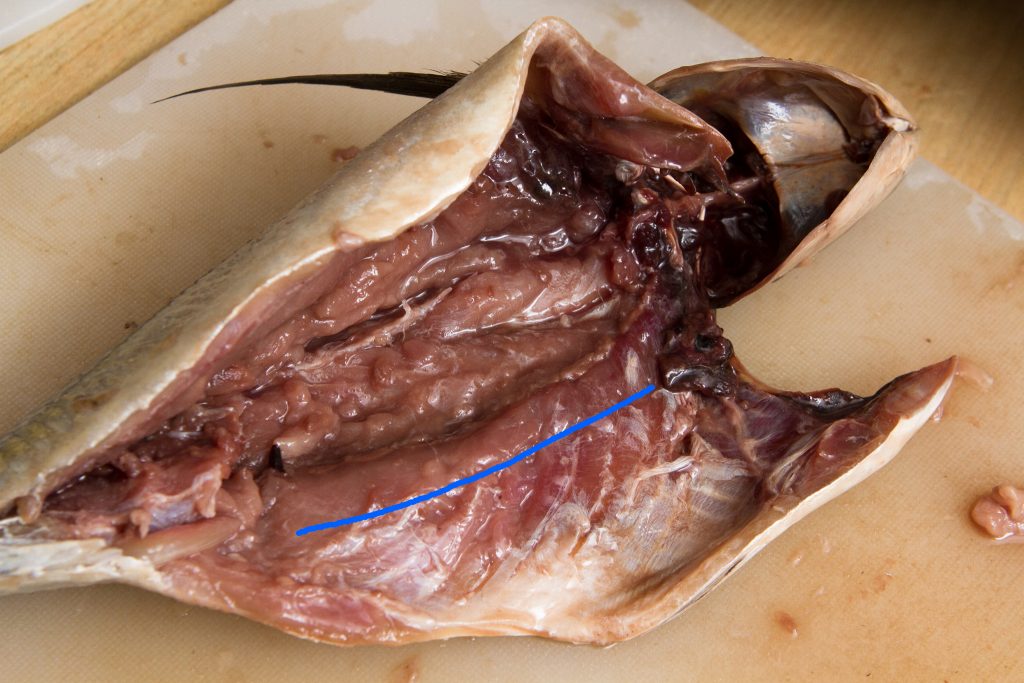
3. After paring off whatever flesh you could salvage, discard the bones. Put the pared flesh back into the cavity of the fish. (Shown in the photo are bones from 2 fishes).
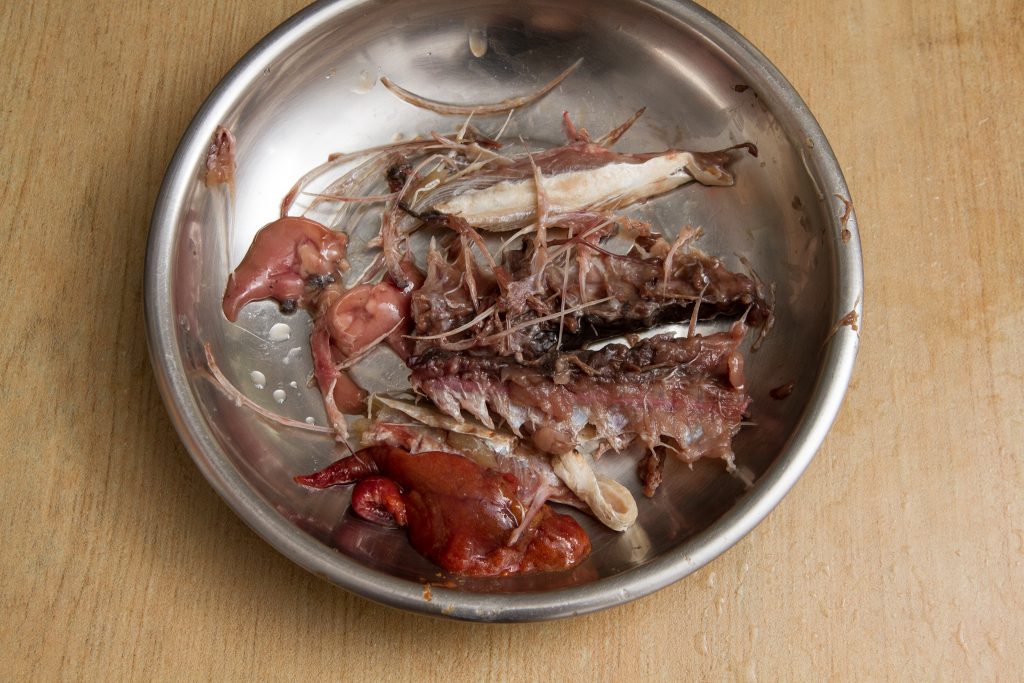
4. Coat the exterior of the fishes with about half a teaspoon of turmeric powder (about 5g). You could also rub 1 tsp of cooking oil per side of fish so that when cooked, the finished product looks like it came out of a deep fryer.

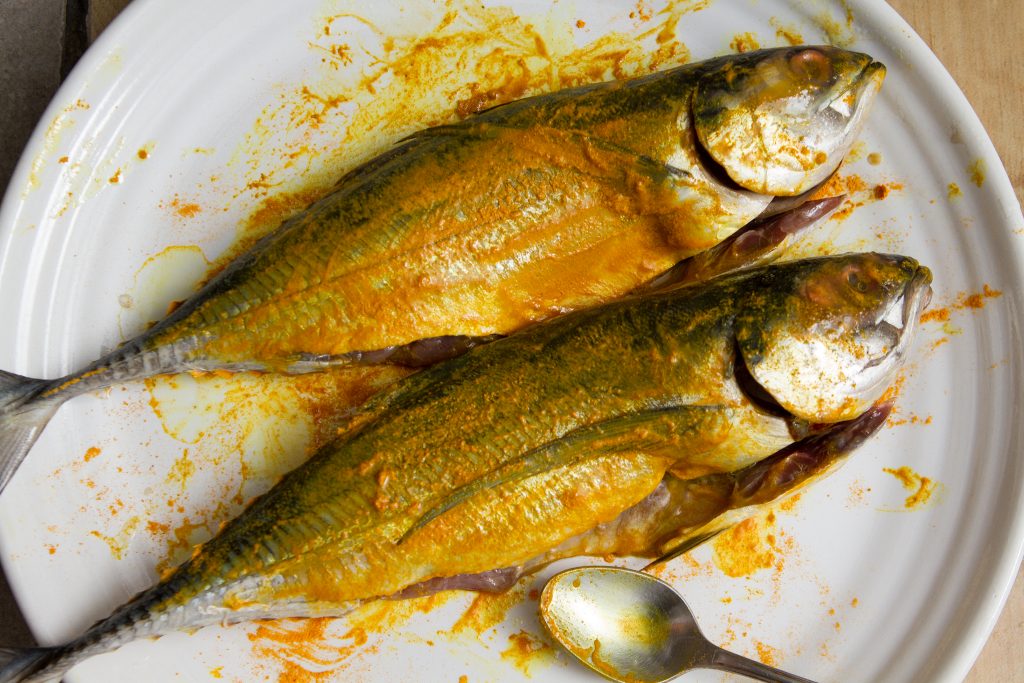
5. Scoop in one tablespoon (or more) of the herbs and spice paste into each fish’s cavity. The more you put, the more moist the cooked meat will be. Still, you put too much, and it all spills out into the air fryer. So find a nice balance for your size of fish.

6. Put the fishes into the fryer basket, and select the mode with the fish icon. The airfryer will do the rest automatically.
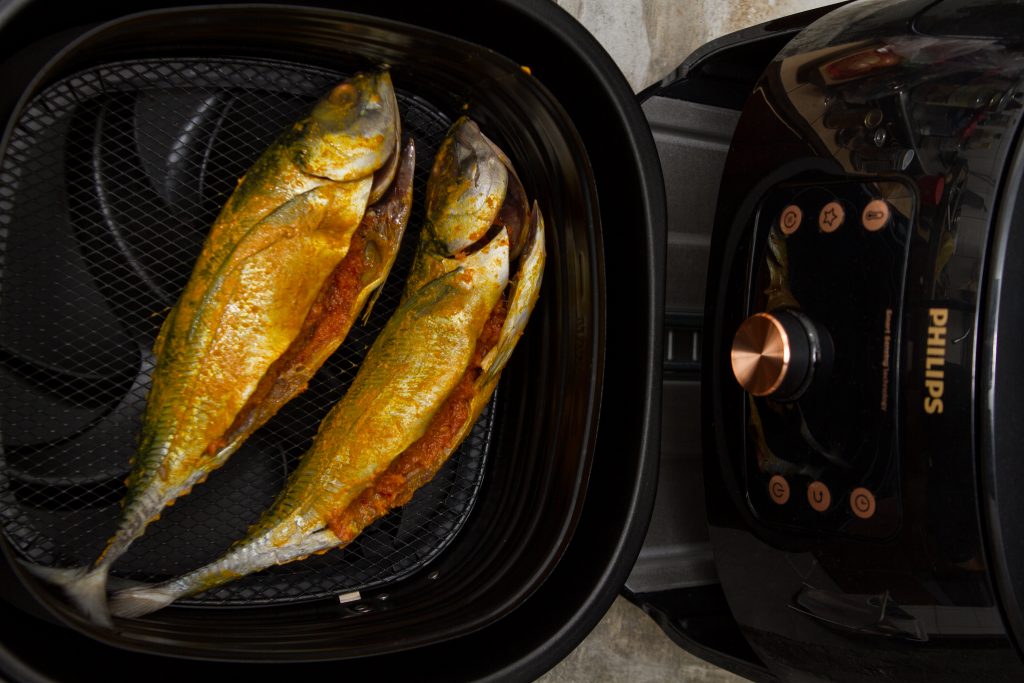
7. When it’s cooked, serve! We served it on a bed of chopped mint and pegaga (centella asiatica), with a sweet chilli on the side. You could also just have it with plain white rice, using the leftover herbs and spices paste as a dip.
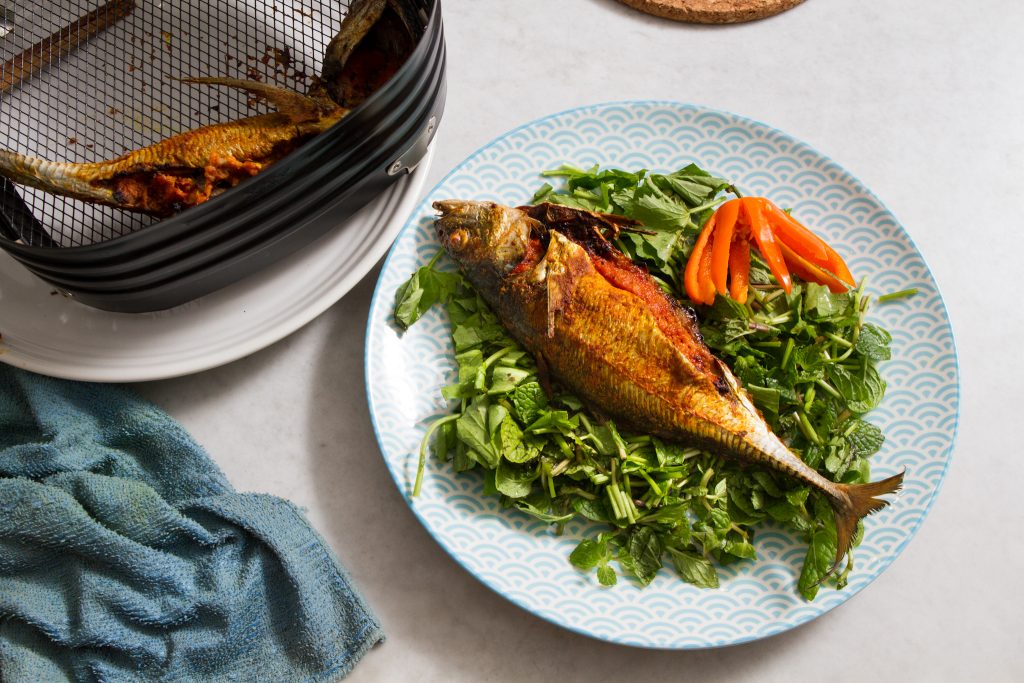
Remember to peel off the skin of the fish to get to the juicy meat inside the ikan cencaru sumbat. If you have suggestions or ideas to improve this recipe, please do PM us on our Instagram or Facebook channels. We’d like to hear what you think.
